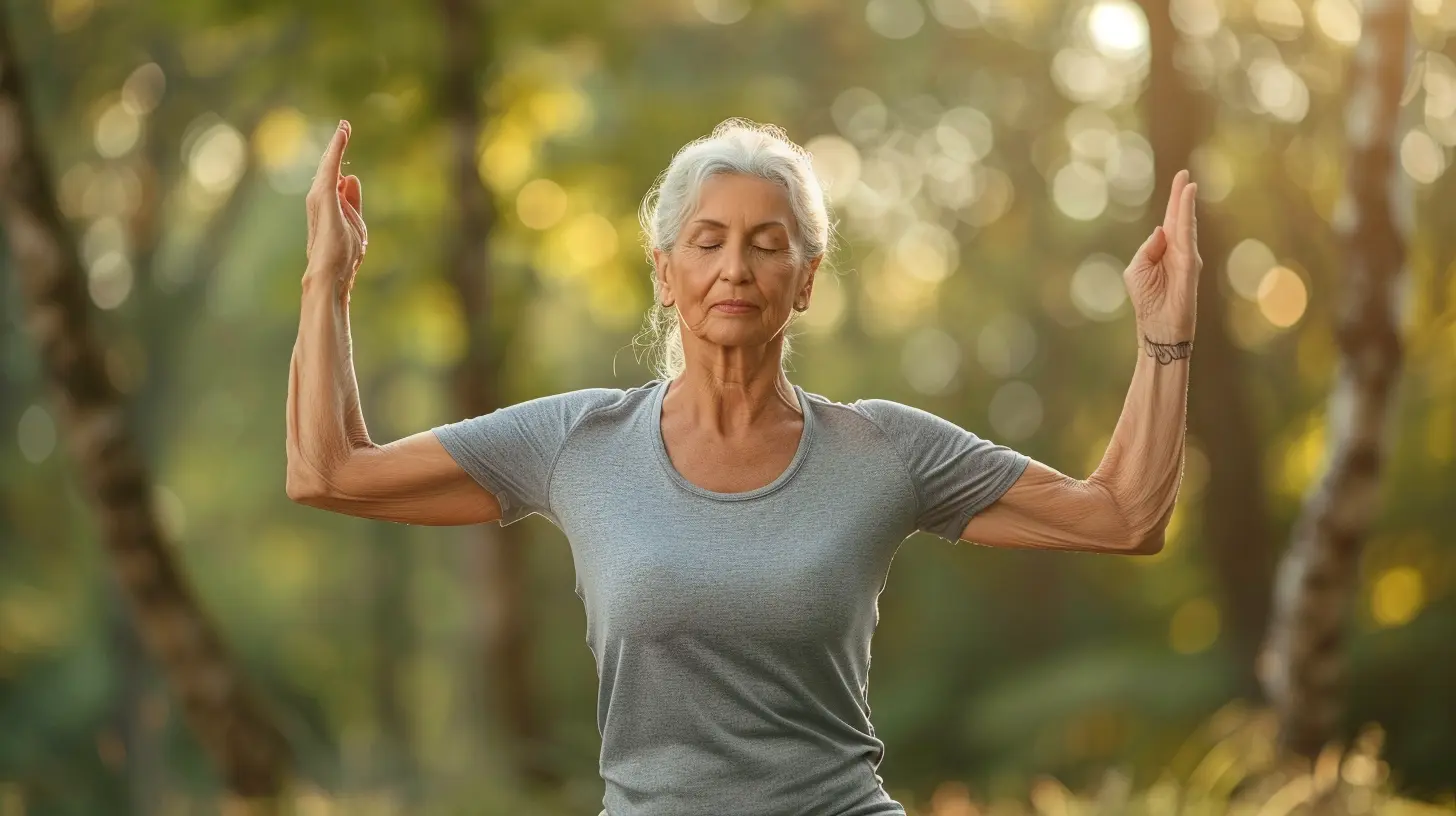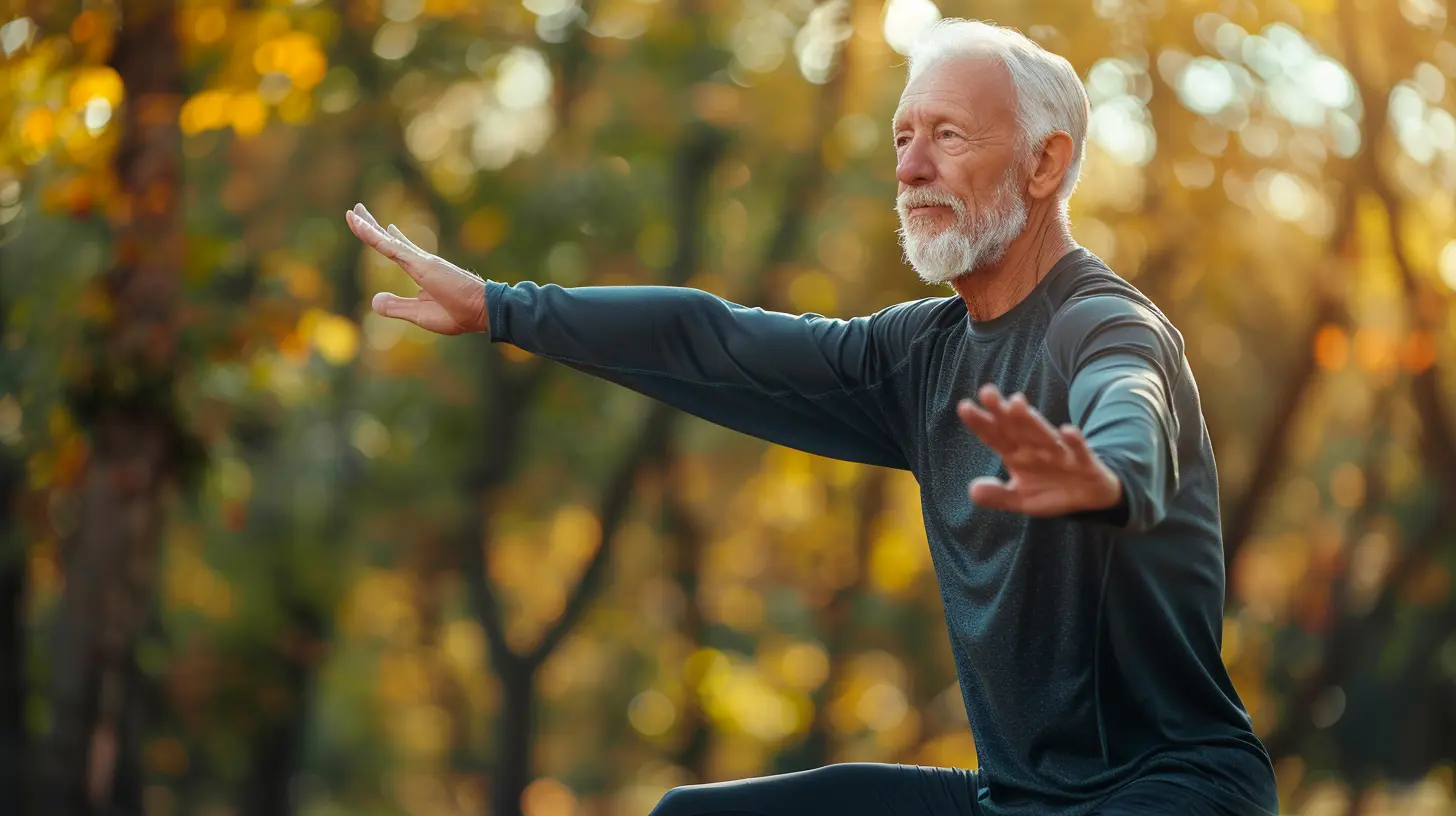How to Maintain Flexibility and Balance in Later Years
22 May 2025
Aging is a natural part of life, but that doesn't mean we have to accept stiffness, poor balance, and limited mobility as inevitable. Maintaining flexibility and balance in later years is crucial for independence, reducing fall risks, and improving overall well-being. But how exactly can we achieve that?
The good news is that with a few intentional habits, you can stay agile and steady on your feet well into your golden years. Let’s dive into some simple yet effective ways to keep your body moving smoothly. 
Why Flexibility and Balance Matter as You Age
Ever noticed how kids can bend and twist effortlessly? While we may not regain that level of flexibility, staying limber in our later years has huge benefits.- Prevents Falls – Poor balance leads to falls, which can result in serious injuries.
- Improves Posture – Flexibility keeps your spine aligned, reducing back and joint pain.
- Enhances Mobility – Staying supple makes everyday tasks easier, from putting on shoes to reaching for a high shelf.
- Boosts Confidence – Moving with ease gives you the confidence to stay active and independent.
So how can we keep our joints and muscles working efficiently? Let’s break it down. 
1. Stretch Every Day
Stretching is one of the simplest ways to maintain flexibility. Think of your muscles like rubber bands—if you don’t stretch them, they tighten up.Best Stretches for Seniors
- Seated Hamstring Stretch – Sit on a sturdy chair, extend one leg straight, and reach towards your toes.- Neck Stretch – Slowly tilt your head from side to side to relieve tension.
- Shoulder Stretch – Bring one arm across your chest and hold it with the opposite hand.
- Cat-Cow Stretch – Get on all fours and alternate between arching your back and dipping your belly.
How Often Should You Stretch?
Aim for 5–10 minutes of stretching daily. It’s best to do it when your muscles are warm, like after a short walk or a bath.
2. Strengthen Your Core for Better Balance
Your core (abs, back, and hips) plays a huge role in keeping you balanced. A strong core helps prevent falls and makes movements more controlled.Simple Core Exercises for Stability
- Seated Knee Lifts – Sit in a chair and slowly lift one knee at a time, engaging your core.- Standing Leg Lifts – Hold onto a chair for support and lift one leg to the side or behind you.
- Pelvic Tilts – Lie on your back, tighten your stomach, and tilt your pelvis slightly upward.
These exercises don’t require a gym or fancy equipment—just consistency! 
3. Practice Balance-Boosting Exercises
Good balance isn’t just about strong muscles—it’s also about coordination. Adding balance exercises to your routine can make a massive difference.Exercises to Improve Balance
- Heel-to-Toe Walk – Walk in a straight line, touching your heel to your toe with each step (like walking a tightrope).- One-Leg Stand – Hold onto a sturdy chair and stand on one leg for 10–20 seconds.
- Tai Chi – This gentle, flowing movement practice has been shown to improve balance and reduce fall risk in older adults.
The key is to practice balance exercises at least 3–4 times a week to see improvements.
4. Stay Active with Low-Impact Activities
If you think intense workouts are the only way to stay fit, think again. Low-impact exercises can keep your muscles and joints in great shape without causing strain.Best Activities for Flexibility and Balance
- Yoga – Improves flexibility, posture, and balance.- Swimming – Water reduces strain on joints while promoting movement.
- Walking – Keeps your legs strong and helps with stability.
- Dancing – An enjoyable way to stay mobile and coordinated.
The key is to find something you enjoy so that you stick with it!
5. Keep Your Joints Healthy with Proper Nutrition
What you eat plays a big role in keeping your joints flexible. Inflammation from processed foods can cause stiffness, while nutrient-rich foods support mobility.Best Foods for Joint Health
- Leafy Greens – Kale, spinach, and broccoli fight inflammation.- Fatty Fish – Salmon and tuna are packed with omega-3s that lubricate joints.
- Berries – Full of antioxidants that protect against joint damage.
- Nuts & Seeds – Almonds and flaxseeds provide healthy fats for joint flexibility.
And don’t forget to drink plenty of water—hydration keeps your joints well-lubricated!
6. Maintain a Healthy Weight to Reduce Joint Strain
Excess weight puts added stress on your joints, making movement more difficult. Maintaining a healthy weight can ease stiffness and improve balance.- Eat Balanced Meals – Focus on lean proteins, whole grains, and fresh produce.
- Limit Sugary & Processed Foods – These contribute to inflammation and joint pain.
- Stay Active – Even light daily movement helps manage weight.
Losing even a few pounds can take pressure off your knees, hips, and ankles.
7. Prioritize Good Posture
Slouching isn’t just bad for appearance—it throws off your balance and can lead to chronic pain.Tips for Better Posture
- Keep Your Shoulders Back – Sit and stand tall.- Engage Your Core – A strong core naturally supports your posture.
- Use a Supportive Chair – If you sit a lot, make sure your chair supports your lower back.
- Check Your Sleep Position – Sleeping on a supportive mattress can prevent stiffness.
Improving posture takes practice, but over time, it becomes second nature.
8. Get Regular Check-Ups
Sometimes, balance and flexibility issues stem from underlying conditions like arthritis, osteoporosis, or nerve problems.- See a Doctor Annually – Regular check-ups help catch issues early.
- Visit a Physical Therapist – They can teach personalized exercises to maintain mobility.
- Get Vision & Hearing Tested – Poor eyesight or hearing can throw off your balance.
Catching potential concerns early can prevent bigger mobility problems down the road.
9. Prioritize Rest and Recovery
While staying active is crucial, so is allowing your body time to recover.- Get Enough Sleep – Poor sleep leads to muscle stiffness and fatigue.
- Take Rest Days – Overdoing exercise can lead to injuries.
- Use Heat or Cold Therapy – Heat relaxes muscles, while ice reduces swelling.
A well-rested body moves better—so don’t skimp on recovery time!
Final Thoughts
Aging doesn’t mean losing flexibility and balance—it just means we have to put in a little extra effort. By stretching daily, strengthening your core, practicing balance exercises, staying active, eating well, and maintaining good posture, you can keep moving with confidence.The best time to start? Right now! Even small efforts add up to big improvements over time.
Take it one step at a time, listen to your body, and enjoy the journey to staying flexible and steady in your later years.
all images in this post were generated using AI tools
Category:
Healthy AgingAuthor:

Sophia Wyatt
Discussion
rate this article
3 comments
Zarek Alvarez
Embrace movement and joy—flexibility keeps life vibrant and delightful!
June 12, 2025 at 4:29 AM

Sophia Wyatt
Absolutely! Embracing movement and joy truly enriches our lives, making flexibility essential for a vibrant and delightful experience in our later years. Thank you for highlighting this!
Tempra Davis
Incorporate regular stretching and balance exercises to enhance flexibility and stability as you age.
May 24, 2025 at 2:34 AM

Sophia Wyatt
Absolutely! Regular stretching and balance exercises are essential for maintaining flexibility and stability as we age. Incorporating them into your routine can lead to improved mobility and reduce the risk of injury.
Imani McKeever
Great insights on maintaining flexibility and balance in later years! Prioritizing these aspects can significantly enhance quality of life and overall well-being. Thank you for sharing!
May 23, 2025 at 2:57 AM

Sophia Wyatt
Thank you for your kind words! I'm glad you found the insights helpful for enhancing well-being in later years.



